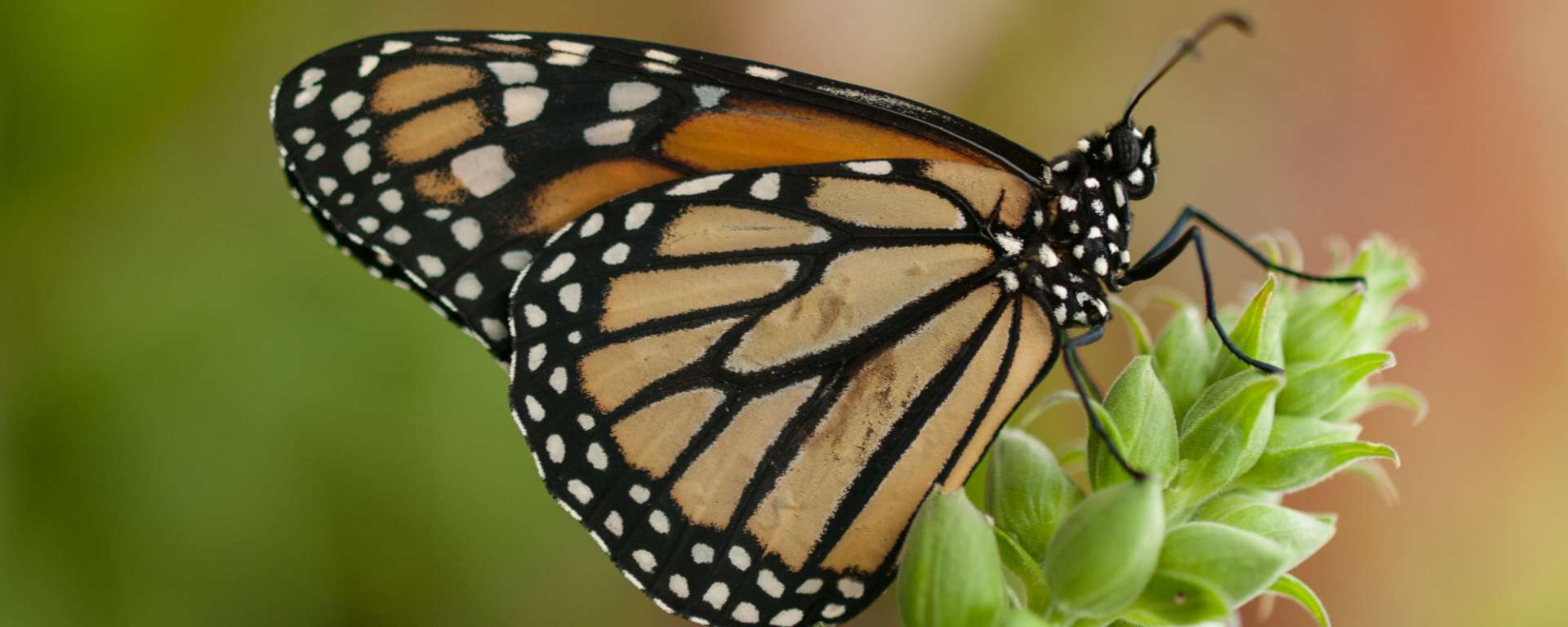Conservation Corner: Collapse of the Monarch
Posted in: Conservation
Tags: monarch butterfly
Safari West Joins the Fight for our Pollinators
Conservation makes up a massive part of what we do here at Safari West and every single one of our departments is involved in it in one way or another. Whether it’s the keeper department’s relentless work to keep a healthy and diverse gene pool for our endangered species, or the restaurant staff’s efforts to recycle everything from food containers to the leftover food itself (Humans may not eat orange peels but lots of animals do!), or our guide staff’s conservation based Safari Tours, we find ourselves working on conservation every day.
One of our most recent conservation projects involves the monarch butterfly, a species many of us grew up seeing in our schoolyards and parks. Monarch populations west of the Rocky Mountains have declined by over 50% in the last twenty years almost unnoticed. Populations east of the Rockies have crashed even harder and are currently only 10% of what they once were.
As humans, many of us are aware of the valuable pollinating service honeybees provide and are also aware that honeybees themselves are facing an epidemic of colony collapse. With the decrease in one important pollinator, it is even more critical that we do what we can to preserve the monarchs, not just for their own good but ours as well.
With that in mind, we’ve begun an ambitious planting project as Safari West. As it turns out, a huge reason for the decline in monarchs is the 33% reduction in their summer breeding habitat. Monarchs lay exclusively on milkweed, a plant most of us consider being a weed. Over the years, milkweed has been largely exterminated by the overuse of certain herbicides, both agriculturally and domestically. Safari West hopes to be a small part in reversing this trend. We are in the early stages of establishing a butterfly garden on the hill behind the main office. We’ve been putting in native milkweed for the fluttering insects to lay eggs on and planting wildflowers to be a food source for the breeding adults.
Our Junior Keeper program has recently taken up the cause and is installing additional plantings all around our 400-acre property. Hopefully, in the near future, we’ll find our views of strolling giraffes more regularly interrupted by the looping swoops of resurgent monarch butterflies.


